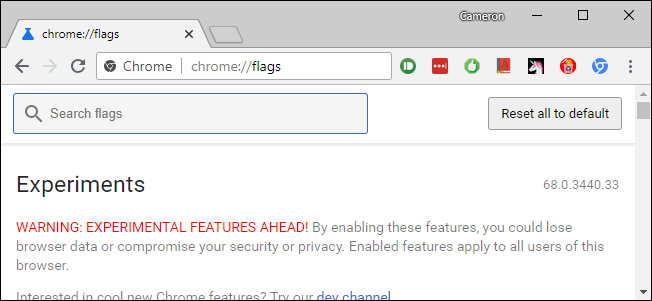
It's no Leap Motion, but it is a fun way to get "input" into a game or app. Move your fingers near the top of your webcams "frame" and you can play the different notes on the scale.

What can you do now once you have Chrome 21? The image above shows me playing with the Magic Xylophone (by Romuald Quantin at Stinkdigital in London), a low-end augmented reality (AR) virtual instrument. Have a look at this slide deck for a (highly encrypted!) breakdown of the technical security considerations discussed at a meeting last year. This group has been pivotal in geeking out on the details to make those permissions be as bulletproof as possible. The Internet Engineering Task Force (IETF) is holding one of their triannual meetings (this time in Vancouver) this week. Other browser makers are advised to follow suit. The empahasis on explicit permissions is clearly built into Chrome's implementation of this standard. Google presents it this way in its official blogpost on the new Chrome release, "What if web apps could see? What if they could hear? In today’s Chrome Stable release, when you give them permission, they can.". The comparison to geo-location permissions is apt, and users should apply the same degree of awareness and caution with real time communication streams as they do with location information or secure (https) connections. Making this sort of functionality work natively in the browser, rather than having to rely on proprietary plugins, is a big win for users and developers alike." He likes that the new features "go through the same security verifications that users already see in other existing Chrome APIs, like geo-location," and that, "this feature was already available in the Opera browser's desktop and mobile versions, so it has been in the wild for some time for a large number of people.

He is not part of the security task force for this project, but he has done his own testing of the getUserMedia API implementation in Chrome. Jehl is a performance hacker who eats HTTP requests for breakfast. "I don't think users should be concerned about it," says Jehl. I do think it opens new creative possibilities for designers and developers of desktop and mobile web apps."īut what about that "malicious spying"? I asked mobile consultant Luke Wroblewski, and he replied, "Personally, I think a lot of smart people have thought real hard about this issue." One of those smart people is Scott Jehl of Filament Group in Boston, the studio that recently helped The Boston Globe become the first major newspaper to switch to a responsive design for its website. "I don't think this means the end of native apps or a new era of malicious spying (although I suppose the latter is always a concern). "Adding camera access via a web standard sounds pretty cool to me," he writes.

I asked web standards advocate Jeffrey Zeldman what he thinks about this development.

On the positive side of the equation, though, native support for webcams and microphones, what is know as WebRTC (for Web Real-Time Communication, an HTML5 standard being drafted by the World Wide Web Consortium (W3C)), creates whole new vistas for what can now be done on the web. Once you have a plugin like Flash enabled in your browser, it becomes a bolted-on part of your computing environment, no more or less secure than if the same functionality were native to your browser. Once you get past the scary headlines that are bound to pop up, like, " Google Switches On Browser Spy Cam in Chrome" (on MSNBC), you will realize that (on a security level) not much has changed. Second, as great a headline as it might be to say "Google is spying on you with your own webcam!" this sensationalism would be no more true than saying that Adobe or Microsoft have been spying on you for years.


 0 kommentar(er)
0 kommentar(er)
